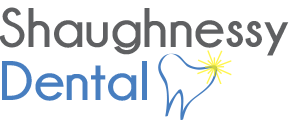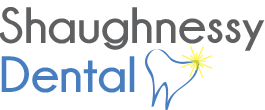Dental Hygiene
Dental Hygiene for Babies
Helping You Care for Your Baby’s Teeth and Gums
Babies require daily dental hygiene care in order to prevent mouth irritation and tooth decay. When you take the time to develop good brushing and flossing habits from an early age, it will make this often monotonous task part of their daily routine; for a lifetime of healthy teeth and gums.
The Beginnings of Oral Health Care
Dental hygiene should begin shortly after a child is born. After every feeding a clean, warm wash cloth should be used to gently cleanse the inside of the mouth. Thrush, a treatable fungal infection caused by Candida (yeast), often appears in areas of the mouth that may have torn tissue, caused by the constant sucking on a pacifier, bottle, or during breastfeeding. The tiny tears remain moist and, if not removed manually, the yeast may cause the painful condition. Signs of thrush include:
-White patches that appear to coat the tongue, inside tissue of the cheek, and gums
-Irregular-shaped patches that are not able to be wiped away, sticking to the tissue
-Pain when feeding or using a pacifier
If left untreated, a nursing mother may develop thrush on her breast, although is not typically considered contagious. See your doctor or dentist and he may prescribe a medication to clear up the infection.
So Much Pain for Such Small Teeth
Teething can begins around 3 months old but typically begins when your child is 6 to 7 months old. Signs of teething may include:
-Excessive drooling
-Irritability
-“Gumming” or biting
-Appearance of a rash around the mouth, or on the face
-Decrease in appetite
-Excessive crying
-Loss of appetite
-Feverish
-Changes in bowel movements
Help ease the pain of teething by using a clean, cool washcloth to gently massage the gums. Offer the child a cool teething ring or a teething biscuit, if that is appropriate for the age of the child. Always supervise your child when using a teething biscuit because of the potential choking hazard. Talk to your doctor or dentist before using over-the-counter pain reducers or desensitizing gel.
Did You Know?
One in every 2,000 babies is born with one or more teeth. This is referred to as a natal tooth. Teeth that appear in the first month of life are referred to as neonatal teeth.
The first teeth that will appear are usually the lower incisors, commonly known as the two front teeth. By the age of three, children should have their complete set of 20 “pearly whites.” When the first teeth start to appear, buy a toothbrush designed for the age of your child, usually this is indicated on the packaging, and gently cleanse the entire tooth without toothpaste.
Beginning at around 18 months, you may choose to introduce a tooth cleansing paste that is safe to swallow and does not contain fluoride. Many brands of children’s toothpaste are available in your local retail store. When in doubt, ask the pharmacist to recommend a brand for you. Different types of baby toothbrushes are on the market; choose one that is right for you and your child.
Early Childhood Caries
Early Childhood Cavities (ECC), more commonly known as “baby bottle tooth decay” is a condition that affects children up to the age of three, or as long as they remain using a bottle. Although rare, ECC may indicate the potential risk for severe tooth decay when the child develops his adult teeth. ECC is caused by:
-Sugars and carbohydrates in the child’s diet.
-Beverages that contain sugar such as milk, infant formula, fruit juice, or any other liquid that contain or is sweetened with sugar.
-Bacteria transferred from the caregiver to the child
-The frequency of feedings
-Allowing a child to fall asleep with bottle that contains any liquid other than pure water.
Prevent early childhood decay by:
-Offering a pacifier rather than a bottle during naps and bed time
-Speak with your dentist for advice on how to expose your child to fluoride, if it is not available through your water supply. Fluoride is recommended by the American Dental Association to strengthen teeth, which may prevent tooth decay.
-If using a bottle during periods of sleep, fill the bottle with only pure water.
Comments are closed


